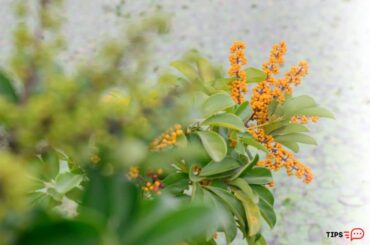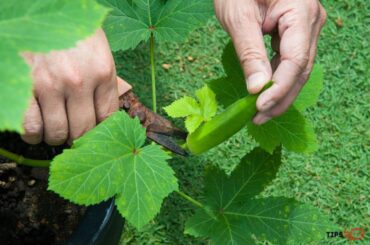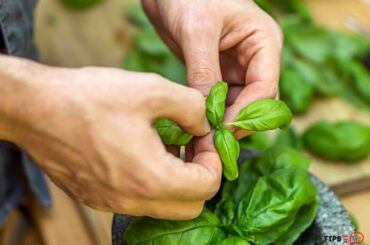How to make keiki paste for orchids? It is not hard, but you need to follow a certain procedure to make a keiki paste. In this article I am going to explain to you about keiki paste and how to make it. Keep reading to learn more.

What is keiki paste?
Keiki paste consists of a chemical called 6-benzylaninopurine. 6-benzylaninopurine is also called Benzyl adenine, 6-Benzyladenine BAP or BA. We could refer to this as BAP in this article. As per the findings of the research, BAP resembles the Same effects that the plant hormone called Cytokinin does. For example, it could elicit the plant grown by contributing for the cell division. In addition to that, it could contribute to the shoot multiplication and axillary bud proliferation too.
Apart from that, it plays a crucial part in delaying aging. Further it ensures that they keep the plants fresh and healthy. So, once you apply this to an orchid, it would give them the signal it is time to wake up! Ideally you need to apply it on the orchid spikes, and it would signal the plants to wake up. In fact, it could force the branch to produce a secondary flower branch. Besides, it can also make them develop a new baby orchid too.
How to make keiki paste for orchids?
First you need to arrange the following ingredients. An active ingredient. BAP OF 0.1g you could easily acquire this in the form of powder. Further you need to arrange a carrier and 100g of Lanolin would suit for this purpose. To explain on Lanolin, it is an oil which you could acquire from sheep wool. The purpose of using the Lanolin is to provide a favorable condition for the hormone.
That is simply because its ph. level does not impact the plants. You can add 01 part of BAP powder to 1000 parts of lanolin to make this paste. Further you could increase it up to 4 parts of BAP to 1000 parts of lanolin and make the paste too. However, refrain from adding more than that as if you do so, it would bring adverse effects on the plants.
When it comes to equipment, you need to arrange a sensitive digital scale which has increments of 0.01g to 200g. Additionally, arrange a long metal laboratory spoon to transfer the BAP powder. Further keep one clear container of about 150 ml to mix them. Apart from that you need to arrange small clear jars with lids. To be precise you need to arrange about 20 of them as you need to store the final product in it.
Last but not least, you need to protect yourself by wearing protective gear such as rubber gloves, chemical goggles, and high-grade respirator when you are dealing with this. To make it, you need to take a container first and make the solid lanolin into liquid lanolin by giving a hot water bath for that. That will make them melt. Next measure the BAP amount in a small glass container. After that add some 99 % isopropyl alcohol using a dropper.
The purpose of adding the alcohol is to dissolve it and to transfer it easily. You may also directly apply the BAP into lanolin, but then you will not be able to see whether it has been dissolved though. Besides if there are any lumps, it would also not be visible if you stick to this method. After that mix the BAP mix and the melted lanolin together by using a tooth peak for a few minutes. Once you do this, all the alcohol would evaporate.
However, if you think there is still some alcohol left, you could place the container in a hot water bath so that remaining alcohol would evaporate. Next use the dropper and transfer the mixture into the containers and cover those containers with lids.

Keiki paste vs rooting hormone
You could use Keiki paste on the rootless keiki to make them develop roots. On the other hand, you could use a rooting hormone to propagate the shrub cuttings. Many get confused when identifying both Keiki paste and with rooting hormone. As aforesaid, keiki paste resembles the same effects that a plant hormone called cytokinin does.
On the other hand, the rooting hormone consists of the root promoting hormone called auxin. If you end up using them in excess, chances are that it could be unhealthy on the plants.
How to use keiki paste?
You need to apply the keiki paste on growth nodes on stems. Usually, the growth nodes would be located on the flower stems of the orchids. So, to get the best results, you need to apply this on the growth nodes which have not produced the flowers. If you apply it on the plants, you need to apply it on the buds which are young and green in color.
When you apply it on the nodes on the orchids, you should mainly concentrate only on one node which will consequently allow the plants to grow that particular spot. If you end up applying keiki paste on many spots it will result in the counterproductive. Further when you apply it you need to start applying them at the top nodes and then apply them to the bottom part of the plants.
How to clone orchids without keiki paste?
You can clone the orchids without keiki paste. Literally once a plant is going through stress and no longer growing with inhibitors from the mother plant, they would tend to meristem to clone on their own. Eventually it would help them to preserve the genome as well. That said, this is not an effective way as chances are that they would be more attractive for fungal attacks.
Further the detachment of the stem cuttings from the mother plant could also badly affect the plants. Hence best recommended is to apply the keiki paste on the growth nodes on the uncut stems so that they would remain enclosed to the mother plants.
When should I remove orchid keiki?
You need to remove the keiki if they have formed a small shoot along with two or three leaves. Further the roots should be about 1-3 inches in length when you remove the orchid keiki. So, when you spot the keiki carrying these features, you could consider separating them from the mother orchid. That said , when you cut, ensure that you do it 1 or 2 inches down the spike of the mother orchid. However, keep in mind that you could remove only the spike section from the mother plant.
Bear in mind that when you remove the keiki , you need to do it with caution and with so much care. If you end up removing them early, chances are that they won’t be able to survive after the transplanting and would not be able to produce new plants. Hence ensure that you stick to aforesaid when you remove the keiki from the orchids. When you cut the keiki, ensure that you are using all sterile tools so that you can do it effectively.
Further I suggest applying some fungicides on the cut areas so that it would help the plants stay healthy. Substances such as cinnamon would be ideal to use for this purpose.
How long does it take for keiki paste to work?
To answer the question on how long it would take for the keiki paste to work, it would take a few weeks. In fact, you could see them develop some new growth after about two weeks’ time. If you wish to ascertain this, you may simply use a toothpick and push aside the paste so that you could see whether a new growth is developing or not.
Read Next : Do You Water Orchids From The Top Or Bottom?




